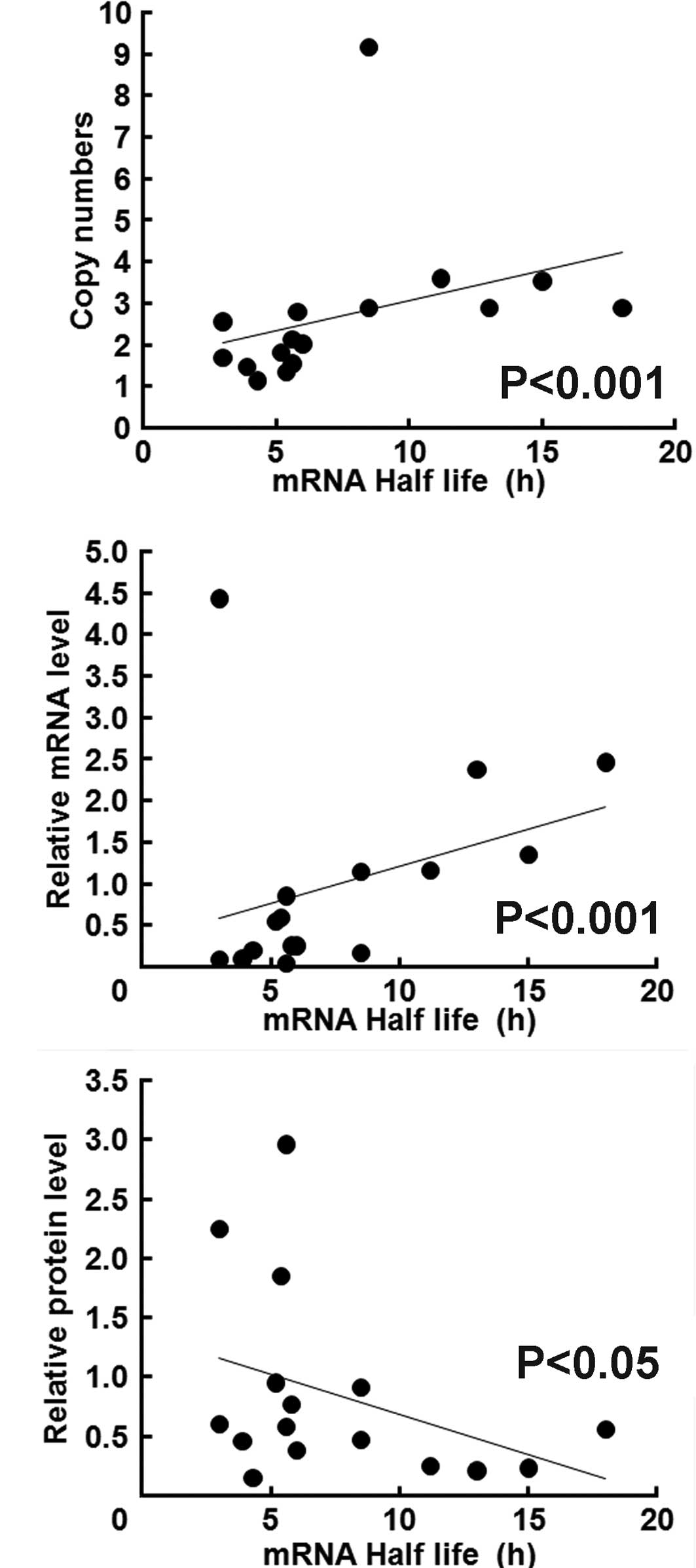Heterozygous mutation (G/G→G/A) at nt 2607 of the EGFR gene is closely associated with increases in EGFR copy number and mRNA half life, but impaired EGFR protein synthesis in squamous cell carcinomas of the head and neck – implication for gefitinib efficacy
- Authors:
- Published online on: September 23, 2010 https://doi.org/10.3892/ol.2010.188
- Pages: 1017-1020
Metrics:
Total
Views: 0 (Spandidos Publications: | PMC Statistics:
)
Total PDF Downloads: 0 (Spandidos Publications: | PMC Statistics:
)
Abstract
Gefitinib (ZD1839, Iressa®) is an orally active agent that inhibits the tyrosine kinase activity of epidermal growth factor receptor (EGFR). Gefitinib has shown a high efficacy in patients with non-small cell lung carcinoma and specific mutations in the ATP-binding pocket of EGFR. These mutations, however, are extremely rare in squamous cell carcinomas of the head and neck (SCCHN). We previously showed that SCCHN cell lines with a heterozygous mutation (G/G→G/A) at nucleotide 2607 of EGFR are more sensitive to gefitinib than wild-type cell lines (79.5% higher IC50). To determine the relationship between the G/G and G/A genotypes, we assessed the EGFR gene copy number and the EGFR mRNA half-life in 16 different SCCHN cell lines. Fluorescence in situ hybridization showed that the EGFR copy number was significantly higher in the nine 2607G/A cell lines than in the seven 2607G/G cell lines (3.59±2.14 vs. 1.58±0.32 copies, a 2.27-fold difference). Similarly, the half life of EGFR mRNA was 2.24-fold higher in cell lines with the 2607G/A genotype than in those with wild-type. By contrast, the EGFR protein levels were inversely correlated with mRNA abundance. These findings suggest that sensitivity to gefitinib of cells with the heterozygous mutation (2607G/G→G/A) was closely associated with gene amplification, the prolongation of mRNA half-life and a decrease in EGFR protein.












